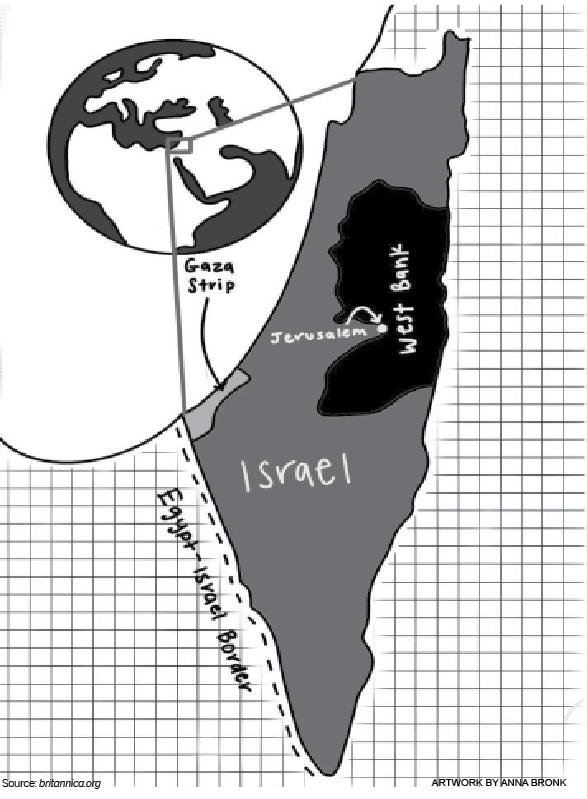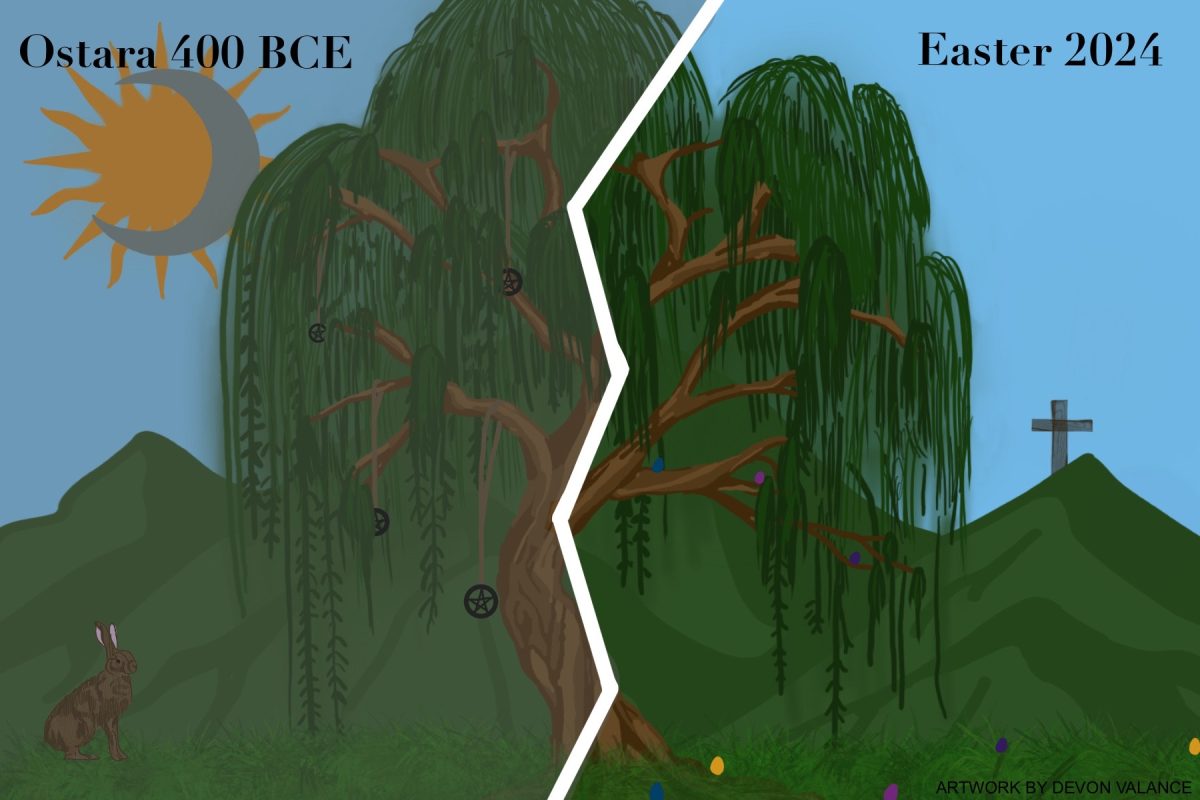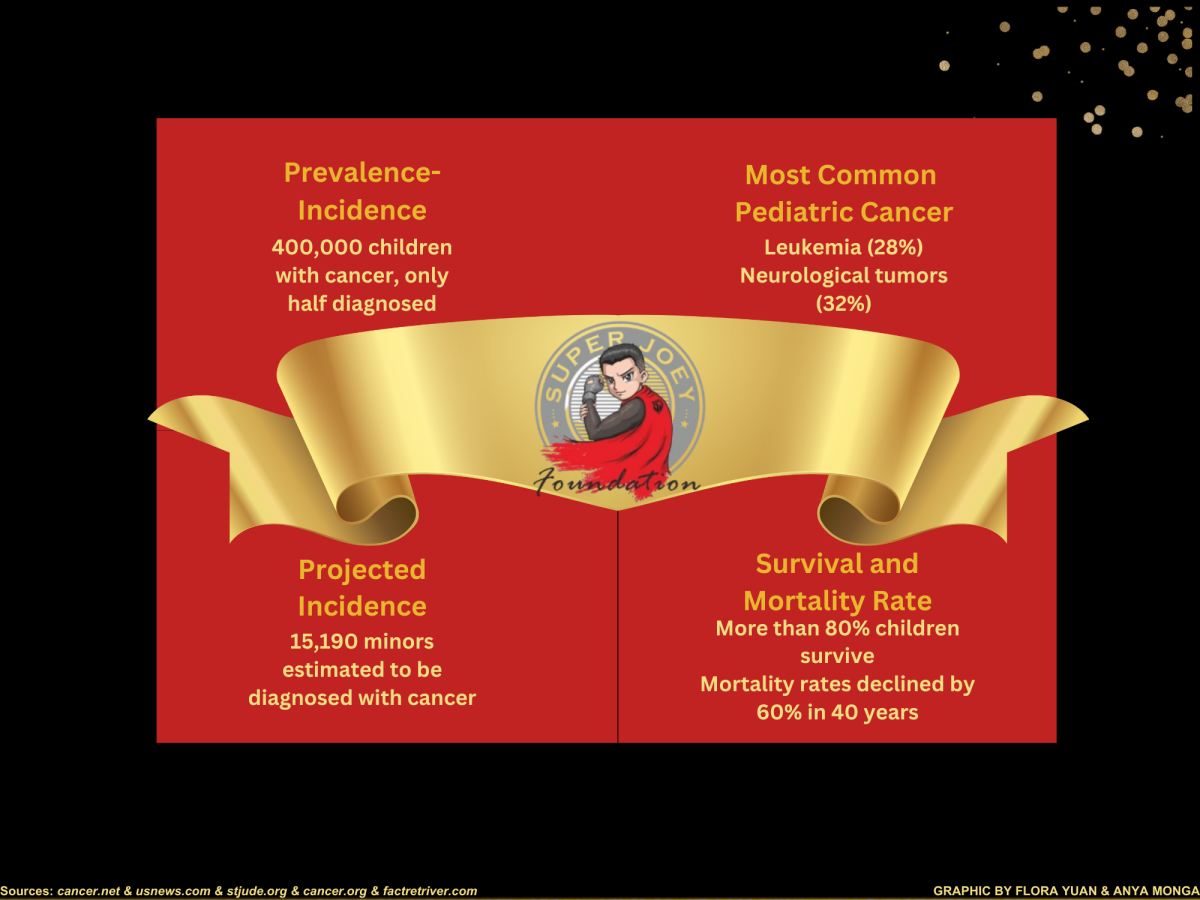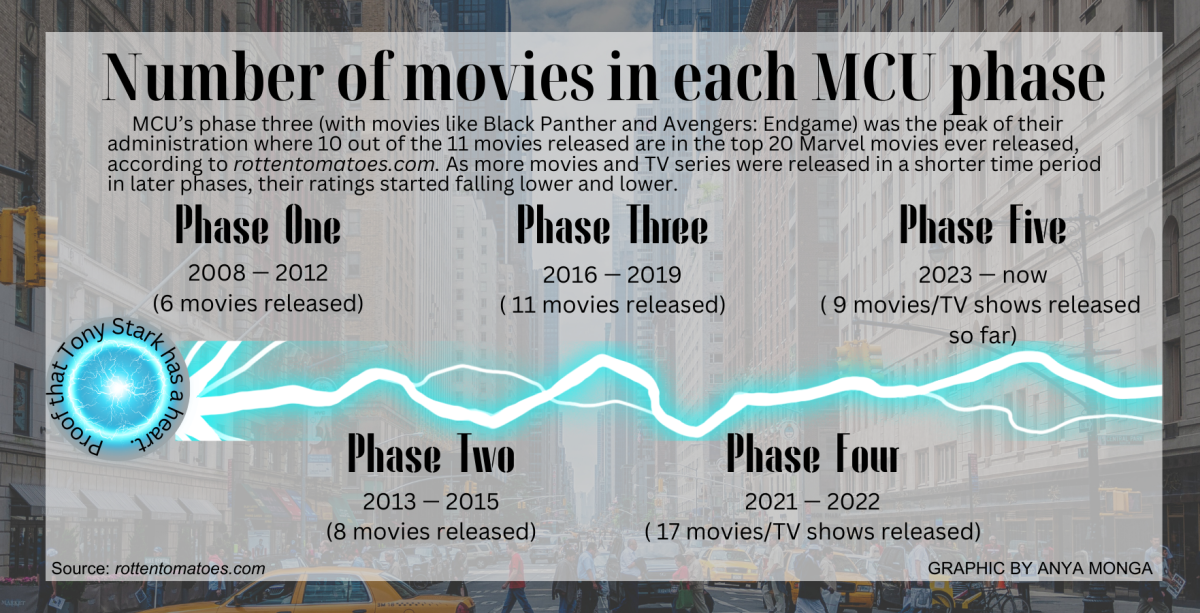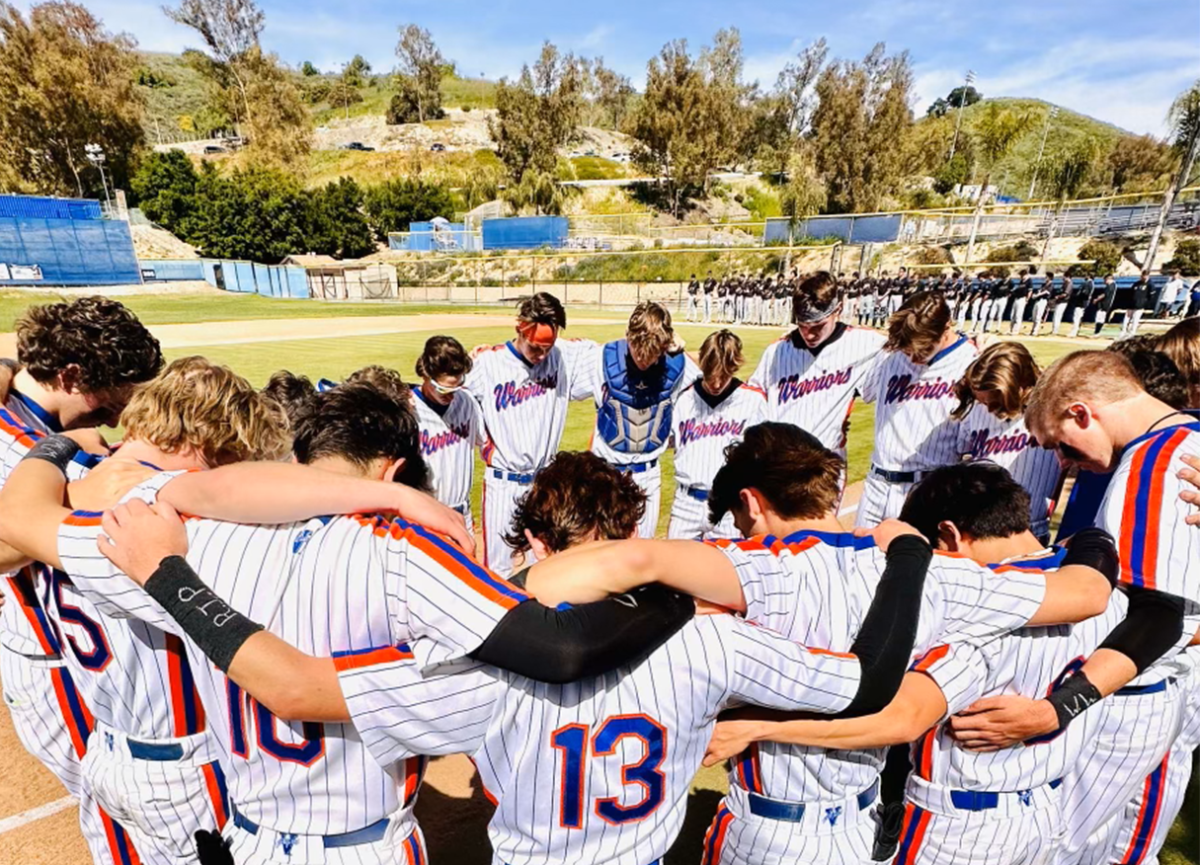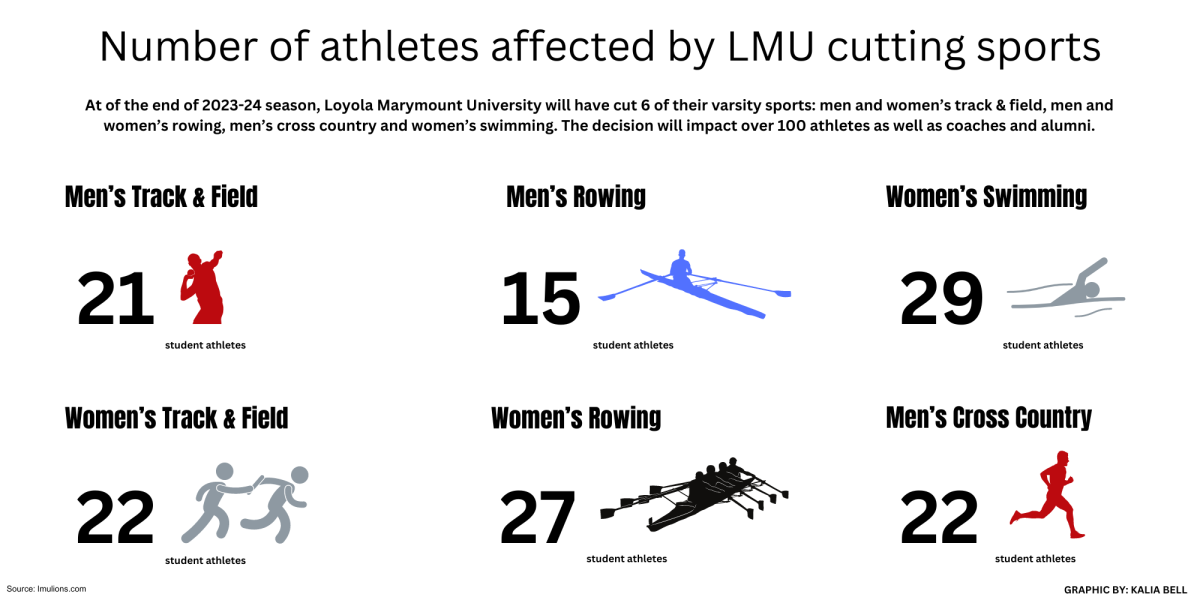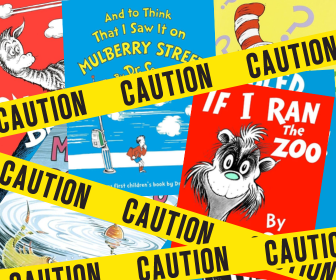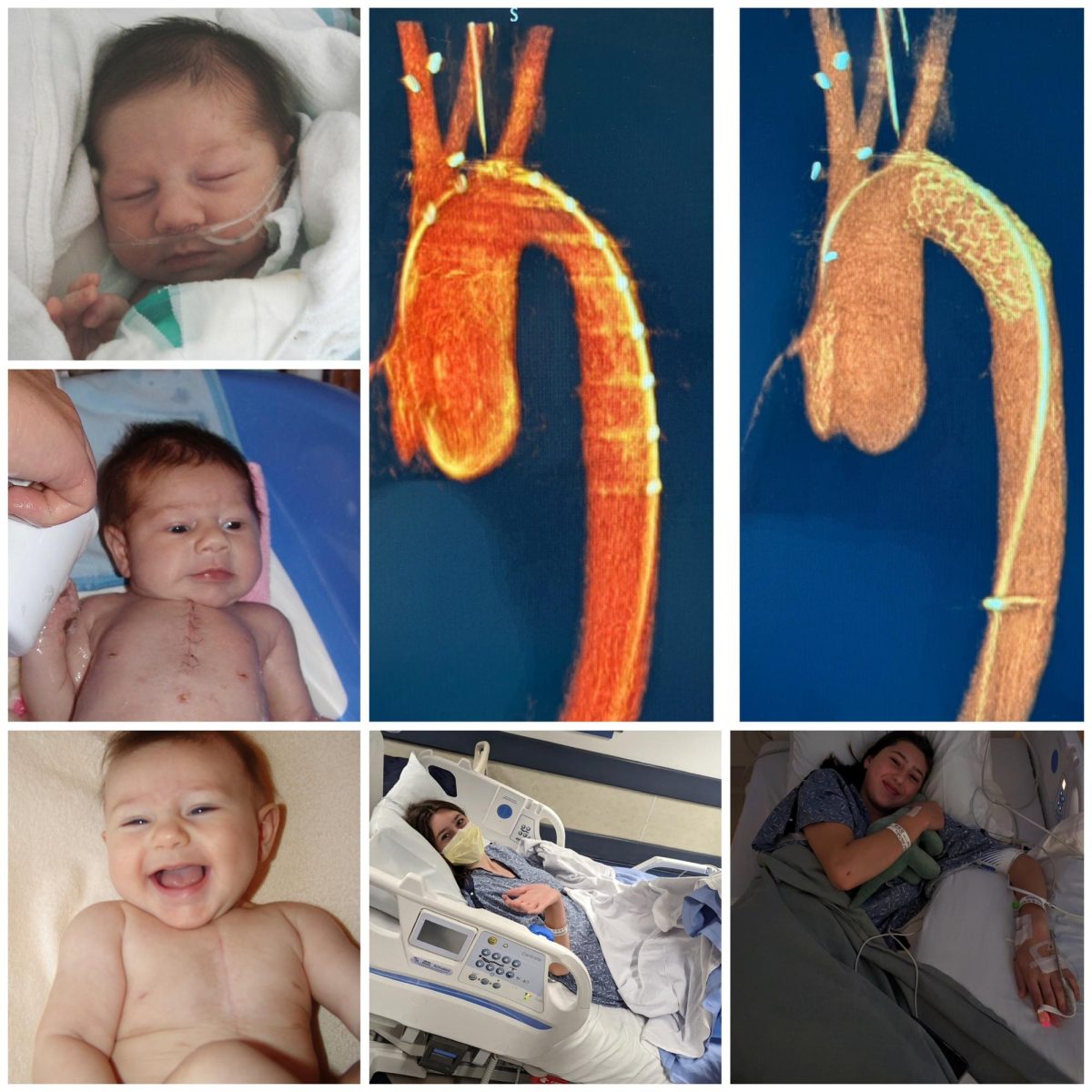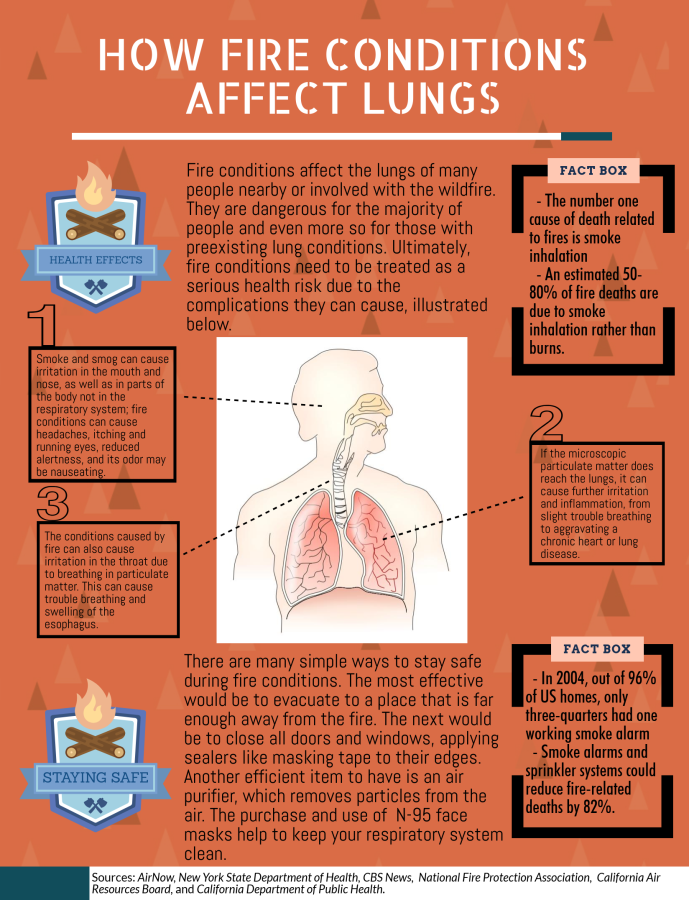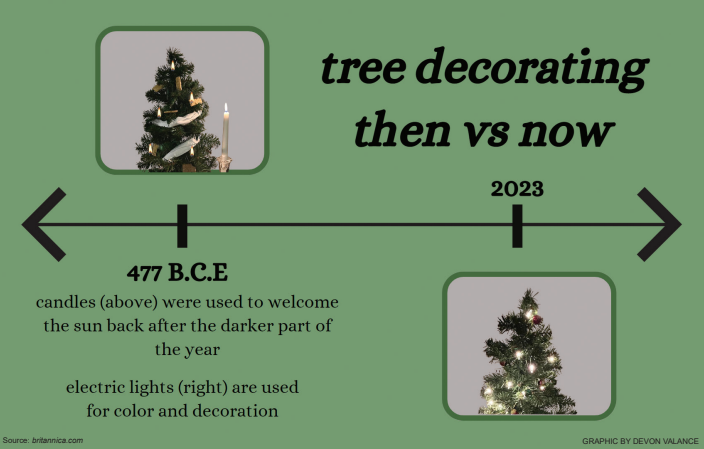The sour smell of smoke lingers in the air as clouds of smog descend over southern California. With smoke in the air and ash on the ground, students are affected by these dangerous conditions.
California’s fire risk is an ever growing situation, with one of the worst droughts, a heavy fuel build up and Santa Ana winds making wildfires difficult to control in recent years. However, not only land damage occurs; fire circumstances affect the health of most people close to them. Many California schools have figured out ways to prevent damage, including WHS.
“Because [teenager’s] respiratory systems are still developing, they breathe more air and air pollution per pound of body weight than adults,” according to AirNow in a fire safety article. “They’re more likely to be active outdoors and they’re more likely to have asthma.”
To help prevent health issues, schools take special precautions in taking care of their students when a wildfire is burning, such as the multiple fires experienced recently in Ventura County and surrounding areas, including the Hill Fire and the Woolsey Fire.
“In fire conditions we’ll keep kids in for lunch, cancel sports, kids with asthma will get checked and advised and masks will be provided,” said WHS health clerk Diane Boothby.
The poor air quality caused by wildfires, when smoke or smog is present in the air, is even more dangerous for asthmatic teens or teens with other lung conditions.
“The fire conditions cause asthmatics to be more at risk for an attack and other lung problems,” said Boothby. “Those with problems breathing in particulate matter might be advised to stay home.”
Multiple fires in the Ventura and Los Angeles counties and the massive Camp Fire in northern California displaced a significant amount of students.
“The Woolsey Fire (14,000 acres) and Hill Fire (6,100 acres)… forced 88,000 evacuations, dozens of school closures and have destroyed dozens of homes in both Ventura and Los Angeles Counties,” wrote the California Department of Education on the recent fires.
Though fire circumstances affect students, they can also affect the safety of school buildings, thus causing some campuses to close for the duration of the fires.
“The impacted students represent eighteen percent of the state’s total public school enrollment, or more than one in six California public school students,” wrote CALmatters, a nonprofit and nonpartisan journalism organization, in an article on the more than one million students kept at home due to recent fires. “That doesn’t include private schools, parochial schools, colleges or universities, many of which shut their doors as the Camp and Woolsey fires in Butte and Ventura counties spiked air quality indexes to hazardous levels at both ends of California.”
When a fire spreads rapidly, firefighters are not always aware of what is burning because of how fast it is growing. These fears of radioactive materials and other chemicals being released and respirated arose during the Woolsey Fire.
“As the Woolsey Fire made its way across Ventura County, it burned around the Santa Susana Field Lab, a site that has been considered ‘significantly contaminated’ by decades of rocket and nuclear reactor testing and a partial nuclear meltdown in 1959,” according to the Los Angeles Magazine.“There was alarm among some residents who worried smoke created near the hazardous site could prove particularly dangerous, but authorities from the California Department of Toxic Substances Control who oversee the site say there is no evidence that smoke from the area around the SSFL is any more dangerous than other wildfire smoke.”
Although fires can be very dangerous for those involved, not everyone who experiences fire conditions have any short- or long-lasting effects. Specific to the Ventura and Los Angeles counties, the excessive winds blew away a majority of the smoke, thus not leaving behind as thick of a layer as other previous fires.
“It is important to recognize that not everyone who is exposed to thick smoke from wildfires will have health problems,” wrote the U.S Environmental Protection Agency in a wildfire smoke guide. “The level and duration of exposure, age, individual susceptibility, including the presence or absence of pre-existing lung (e.g., asthma, COPD) or heart disease, and other factors play significant roles in determining whether someone will experience smoke-related health problems.”



